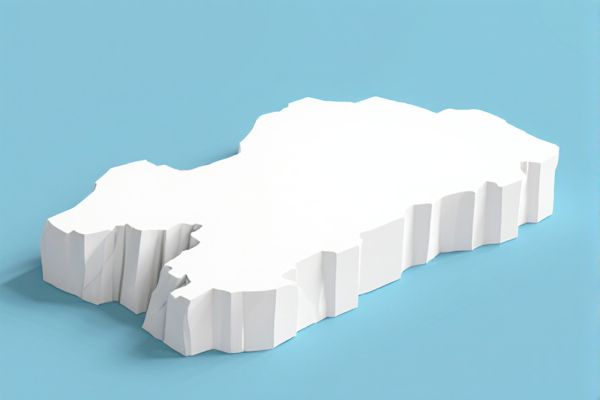
Explore endless possibilities with our random height map generator, designed to create unique and detailed terrain layouts instantly. Customize parameters to generate diverse landscapes perfect for gaming, simulations, or creative projects. Experience smooth and efficient performance that brings your virtual worlds to life seamlessly.
Online tool for random height map generator
We have prepared several sample height maps for you to use and randomize instantly. You can also input your own list for customization. With a single click, the generator will provide a randomized list and a single value ready for use.Data Source
Single Result
Multiple Results
Introduction to Random Height Map Generators
Random height map generators create detailed terrain models by algorithmically producing elevation data that simulates natural landscapes. These generators utilize noise functions such as Perlin or Simplex noise to produce realistic variations in height, essential for applications in gaming, simulation, and procedural environment design. By adjusting parameters like frequency, amplitude, and octaves, users can customize terrain features ranging from smooth hills to rugged mountains.
Key Applications in Digital Environments
Random height map generators play a crucial role in creating realistic terrain for video games, virtual reality simulations, and geographic information systems. These tools enable developers to produce diverse and unique landscapes by algorithmically simulating natural elevation variations, enhancing environmental authenticity and immersion. Their application extends to procedural content generation, environmental modeling, and augmenting artificial intelligence training datasets with varied topographic features.
Fundamental Principles of Height Map Generation
Height map generation relies on procedural algorithms such as Perlin noise, Simplex noise, or fractal Brownian motion to create realistic terrain elevation data. These algorithms manipulate grayscale values representing elevation, where lighter pixels indicate higher terrain and darker pixels represent lower terrain. By layering multiple noise functions and applying smoothing techniques, the generator produces varied and natural-looking landscapes suitable for simulations, games, or geographic modeling.
Popular Algorithms for Random Terrain Creation
Popular algorithms for random terrain creation include Perlin noise, Simplex noise, and Diamond-Square. Perlin noise generates smooth, natural-looking gradients often used for realistic landscapes, while Simplex noise offers improved computational efficiency and visual quality. The Diamond-Square algorithm creates fractal terrain by recursively subdividing a grid, producing rugged and varied height maps.
Essential Parameters for Height Map Customization
Essential parameters for height map customization include resolution, which determines the detail level and size of the terrain grid, and noise type, such as Perlin or simplex, that influences the natural variation in elevation. Elevation range controls the minimum and maximum height values, shaping the overall topography's vertical scale. Additional parameters like frequency and amplitude adjust the scale and intensity of terrain features, allowing precise control over the ruggedness and smoothness of the generated height map.
Integration with Graphics Engines
Random height map generators seamlessly integrate with popular graphics engines like Unity and Unreal Engine, enabling developers to create realistic terrains procedurally. These generators often utilize algorithms such as Perlin noise or Diamond-Square to produce varied elevation data directly compatible with engine terrain systems. Integration capabilities typically include support for importing height maps as textures or direct API access to dynamically modify terrain in real time, enhancing game level design and simulation accuracy.
Enhancing Realism with Noise Functions
Random height map generators enhance realism by integrating advanced noise functions such as Perlin noise, Simplex noise, or Worley noise, which simulate natural terrain features with smooth gradients and fractal detail. These noise algorithms create varied elevations, mimicking mountains, valleys, and plateaus by layering multiple frequency octaves to add complexity and depth. Incorporating noise-based erosion simulations further refines the terrain by replicating natural weathering effects, resulting in highly realistic and visually appealing landscapes.
Performance Considerations and Optimization
Random height map generators require efficient algorithms to balance detail and computation speed, often leveraging Perlin or Simplex noise for smooth, realistic terrain. Optimization techniques include level of detail (LOD) management, caching noise calculations, and parallel processing using GPU shaders or multi-threading. Memory usage reduction through data compression and sparse representation enhances performance, critical for real-time applications such as games and simulations.
Use Cases in Games and Simulations
Random height map generators are essential tools for creating realistic terrain in games and simulations, enabling dynamic world-building with varied landscapes such as mountains, valleys, and plateaus. They enhance procedural content generation, allowing developers to efficiently produce vast, unique environments that improve player immersion and replayability. These systems are widely used in open-world games, flight simulators, and virtual training platforms to simulate natural terrain features with minimal manual input.
Future Trends in Procedural Terrain Generation
Future trends in procedural terrain generation emphasize advanced random height map generators powered by machine learning algorithms, enhancing realism and variability. Integration of neural networks enables dynamic landscape creation with adaptive detail levels and environmental factors influencing terrain features. Real-time processing improvements facilitate immersive virtual environments for gaming, simulation, and geospatial analysis.
 azrandom.com
azrandom.com